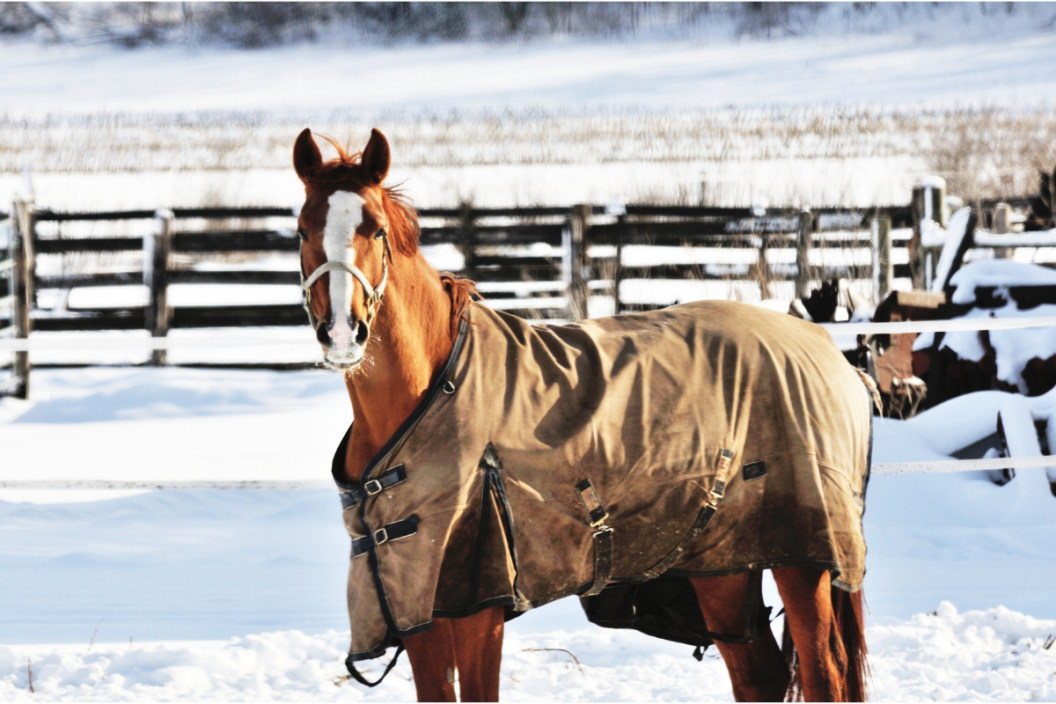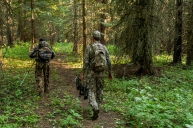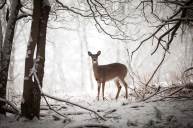Barn living is the life of a horse, but how can you protect a horse in winter?
In some areas of the country, winter temperatures drop below freezing, making for some chilly conditions. While horses' hooves and legs are made for being in the cold, it is important to prepare for the wet weather, especially if you want to maintain proper horse care and protect them from potentially sub-zero temperatures. Horses are notoriously sensitive to sudden changes in temperature, which can affect their overall health. Horse owners know that a horse can get colic easily, among other ailments, at any time, but especially during the winter months. Prepping horses in winter can stave off many illnesses and potential injuries while saving on costly vet bills.
Prepping Horses For Cold Weather
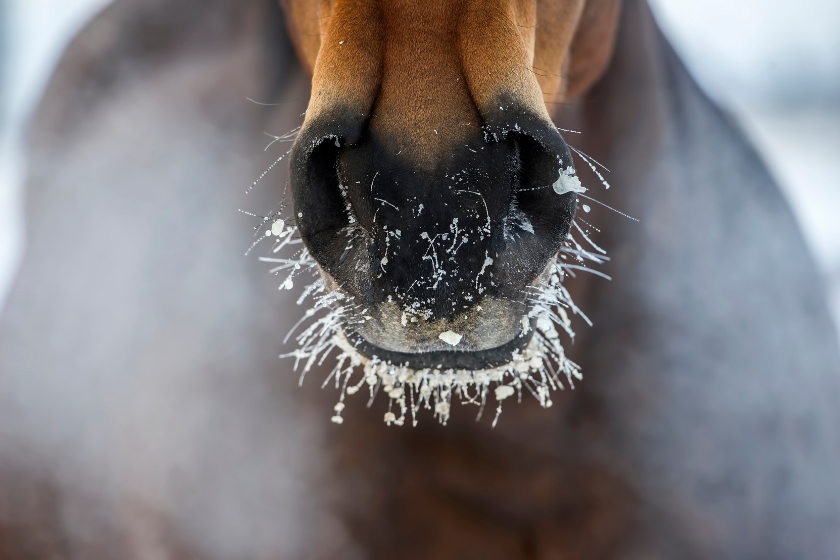
According to the University of Minnesota, there are multiple things horse owners can do to prepare their horses for winter. First, a horse needs to increase their water intake as winter weather sets in. Horses in winter have a higher chance of becoming dehydrated and developing impaction colic. Impaction colic happens when a horse begins to eat and drink less, so fecal matter begins to dry out, obstructing their bowels. According to Michigan State University, the obstruction can be caused by feed, hay, dirt, or even sand. Even if your horse is eating good quality feed, impaction colic can still occur without enough water; adult horses need at minimum 10-15 gallons of water. Ideally, they will eat 1-2 percent of their body weight in food, so they need all that water to help their digestive system move along properly. Unfortunately, it can be fatal if they do not see a vet and receive treatment.
Another reason they need to drink enough water is to keep up with their body's energy requirements. If they drink less water, a horse will eat less, making it hard for them to tolerate the cold. To encourage your horse to drink more water, make sure the temperature is between 45 and 65 degrees Fahrenheit. According to the University of Minnesota, studies have shown that ponies increase their water intake in winter when the water is at temperatures above freezing. In addition, increasing a horse's salt intake will help with its water intake, and they should have one to two ounces of salt each day. Some of the university's other tips are to do the following:
- Clean their water trough thoroughly
- Make sure there is always fresh water
- Use a tank heater to keep warm water available
- Double-check the condition of your tank heater. Make sure there are no loose or worn wires.
Ice and snow can be hard on your horse's digestive system, especially if they are not used to it. If a horse is not drinking from their trough, you can try putting some in water buckets to drink from while they are out in the pasture. A smaller amount of water may encourage them to resume drinking.
Adjusting Their Feeding

Part of a horse's winter care is understanding how their energy needs relates to a horse's diet. In addition, when a horse reaches a lower critical temperature, it affects how they maintain their body temperature when the temperature drops. A lower critical temperature can vary from horse to horse, but it is generally between 41 degrees Fahrenheit in summer and 18 degrees Fahrenheit with a winter coat.
Horses with short hair will not do as well with cold, wet weather and will not be able to withstand low temperatures. A horse who has a long hair coat and is used to colder climates will be able to withstand lower temperatures, especially if they have fat stores to help keep their body heat. Horses who do not have as much mass need additional calories in the diet to stay warm.
To help your horse keep their body condition steady throughout the winter months, increase their feed intake. The University of Minnesota cited that horse owners need to increase the amount of hay in their horse's diet. For every degree below 18 degrees, they need more energy — Generally, a mature horse needs 16 pounds of hay, but a winter horse diet should be upped to at least 18 to 18.5 pounds of hay. Forage is the best way to keep a horse warm. The microbial fermentation that comes along with digesting hay is the best way to keep a horse's body warm during the winter. While grain is generally a part of their diet, it does not have the same effect. If your horse is only in a paddock without a barn or windbreak to seek shelter under, they will need even more hay, especially since they will not get to eat much off of the frozen ground.
Horses develop a winter hair coat that can hide weight loss, so check your horse's body condition to make sure they are maintaining their weight as winter goes on. A horse's body condition score should be around a 5 or 6 on a scale of 1, being extremely thin and 9 being overweight.
Horse Shelters & Blankets
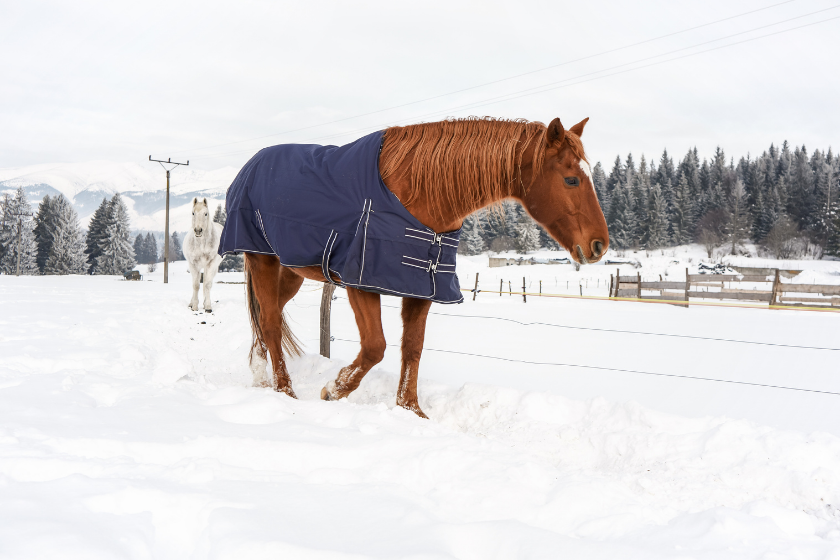
Horses should be able to run in and take shelter from winter storms. Having a barn, shed, or some form of windbreak is important to keep your horse warm and healthy. Most adult horses can withstand temperatures down to minus-40 degrees Fahrenheit if they are in a shelter. Without one, they can be outdoors in temperatures around zero. Granted, age, size, and hair coat all play into a horse's ability to survive in the cold. Older horses won't be able to tolerate temperatures as well as younger horses. In addition, a run with an open front shed can provide them with cover when storms move in.
Blankets are another way to protect a horse from heat loss. But, don't be in a hurry to put the coat on too quickly. If you place a blanket on your horse too soon, it can prevent them from growing their natural winter coat. Place a winter blanket on your horse after about December 22, as a general rule. Though, if the weather dips below 5 degrees, it is time to place a blanket on your horse, especially if they do not have a shelter. If they are going to get wet, have a short coat, are older or very young, or have a body condition score under three, they need to have a proper fitting blanket.
It is important that the blanket is dry when you put it on and that it fits perfectly. If the blanket does not fit well, it can harm your horse, giving it sores. Also, do not leave the blanket on 24/7. It should be taken off, checked for wear, and repositioned properly.
Winter Hoof Care
In the winter, a horse's hooves do not grow at the same rate as they do the rest of the year. But, they should still be trimmed every 6-12 weeks. Trimming them before winter hits will prepare them for the cold weather. Some horse owners choose to leave them unshod at this point as well. Horses can get ice and snow in their hooves, which can cause them to fall, leading to potentially injure their tendons and joints. It is best to check your horse's hooves each day and pick out any snow that may have accumulated.
If your horse is left unshod during the winter, they may do better in the ice and snow. Not having shoes on decreases their chance of slipping. If your horse needs to keep shoes on year-round, a farrier can attach snow pads and studs to keep them from sliding. Have snow/ice melt on hand to throw on the ground to keep your horse from sliding. It also helps melt the snow, so there is a clear path for your farrier or your veterinarian just in case you need them quickly.
How do you prep your horses for winter? Tell us on our Wide Open Pets Facebook page.
